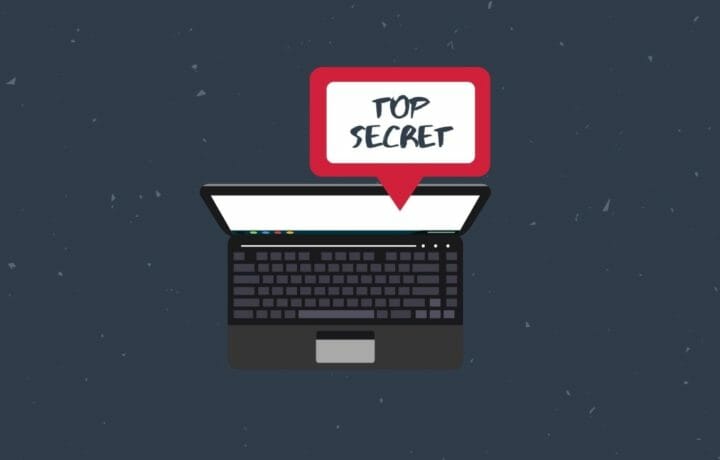Updating your security clearance eligibility can be very easy or very difficult, depending on where you are and what job you have. I am writing about clearance eligibility, not employment suitability or HSPD-12 credentialing. There are certain rules in the Personnel Security Program that must be followed for you to maintain your current clearance or to upgrade it to a higher level.
The most important rule is the need for a clearance. Regardless of your employment status (active duty military, military Reserve or National Guard, federal civilian employee, federal contractor or a consultant to any of these), if you do not require access to classified information in the performance of your duties, you cannot upgrade your clearance or be processed for a periodic reinvestigation. The only exceptions are military personnel who hold a skill or specialty that requires a specific clearance eligibility to maintain the skill/specialty or you are Key Management Personnel (KMP) with a federal contractor. Military personnel who are required to hold a clearance eligibility to maintain a skill or specialty should have that skill/specialty withdrawn if their clearance eligibility is denied or revoked.
In accordance with the National Industrial Security Program Operating Manual (NISPOM), DoD 5220.2-M, all company KMP are required to hold a clearance eligibility at least as high as the Facility Clearance Level (FCL) awarded to their company. The NISPOM provides procedures to follow if a KMP has been denied or revoked a clearance eligibility.
Your first step is to contact your security manager to verify the type of investigation and date completed; the level of clearance eligibility and the date granted; and level of current access. For individuals associated with DoD, this information is contained in the Joint Personnel Adjudication System (JPAS). Security eligibility is valid for a set period of time based on the date the investigation is completed, not the date the eligibility determination was made. Eligibility for Top Secret is valid for 5 years, Secret is valid for 10 years and Confidential is valid for 15 years. So if your investigation for Secret was completed on January 15, 2000 and you were granted Secret eligibility on April 15, 2001, then you are due for a periodic reinvestigation (PR) to maintain the Secret eligibility on January 15, 2010.
The next important rule is that your security manager must verify the need for your investigation and clearance eligibility when submitting the investigation packet. If your organization uses a hard copy Standard Form 86 (SF 86), Questionnaire for National Security Positions, this is accomplished by the security manager completing appropriate entries and signing the Agency Use Block. If your organization uses the electronic Questionnaire for Investigation Processing (eQIP), this is accomplished by your Security Manager initiating the eQIP and documenting the requirement electronically. For Department of Defense (DoD) contractors, the Facility Security Officer must identify the contract that you are working on before sending the packet to the Defense Industrial Security Office (DISCO). DISCO verifies that the contract is a valid classified contract requiring a clearance level at least equal to the clearance requested before sending the packet on to the Office of Personnel Management (OPM). Remember, only your security manager can initiate and submit a request for investigation.
Current guidance states that your security manager should not submit your PR more than 90 days before the due date. If you know when your PR is due, your Security Manager should notify you about 120 days before the due date to start collecting the information necessary to complete the SF 86/eQIP. Personally, I provide my employees with a blank SF 86 about 120 days before the due date so that can collect the information and make the eQIP data entry process as easy as possible. Being proactive in this effort can have a surprisingly favorable result for security managers and employees alike. A recent case for my company went like this: the eQIP was submitted to DISCO on July 17th (80 days prior to the due date); it was passed to OPM on July 18th; the case opened on July 24th; closed on July 30th; and the Secret clearance was granted on August 2nd.
With the Federal budget stretched as it is and the threat of sequestration looming, federal oversight of the security clearance process has never been greater. There are many articles on this site that address the time, cost and oversight of this program, such as: Number of Individuals with Security Clearances Nears 5 Million (July 2012); GAO: Security Clearance Policies Unclear, Cost Money (July 2012); Clearance Holders Could Face a Desk Audit of Their Need to Access Classified Info (July 2012); Security Clearance Process Still Inefficient (December 2011); How Much Does it Really Cost to Get a Security Clearance (August 2011); and How Long Does it Take to Get a Security Clearance (4Q FY10) (July 2011), among others.
Organizations and security managers cannot play fast and loose with the submission of investigation packets to upgrade clearances that are not needed or to build pools of cleared personnel for future work. Industrial Security Representatives (ISRs) who monitor and oversee federal contracting companies have access to JPAS and other databases. ISRs are charged with reviewing security procedures and to document/address violations of policies and procedures. Your company’s ability to bid on and carry out classified federal contracts can be greatly hampered by such violations. My best advice is – don’t go there.



